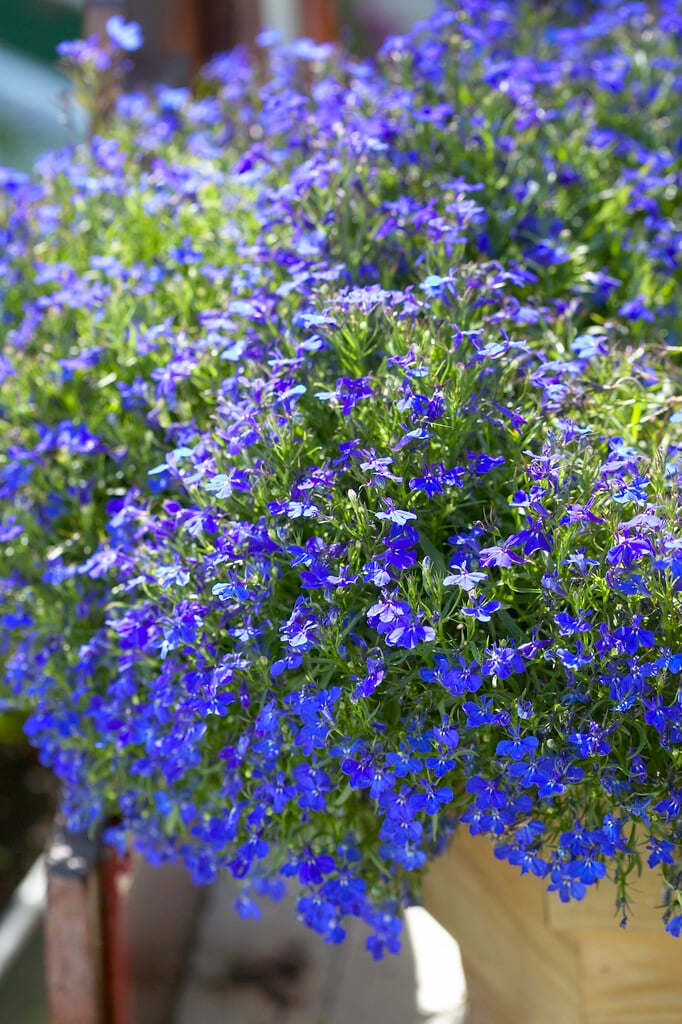Lobelia erinus
trailing lobelia
A trailing, tender perennial grown as an annual, with fine, spreading stems, tiny leaves and masses of small flowers from late spring until autumn. In the wild, the species has blue to violet flowers and dark green leaves; in gardens, cultivars may be trailing or bushy, have pale, mid- or dark green leaves, sometimes flushed with bronze, with white, pale, mid- or dark blue, or purple flowers
Size
Ultimate height
0.1–0.5 metresTime to ultimate height
1 yearUltimate spread
0.1–0.5 metresGrowing conditions
Moisture
Moist but well–drainedpH
Acid, Alkaline, NeutralColour & scent
| Stem | Flower | Foliage | Fruit | |
| Spring | Blue Purple | Green | ||
|---|---|---|---|---|
| Summer | Blue Purple | Green | ||
| Autumn | Blue Purple | Green | ||
| Winter |
Position
- Full sun
- Partial shade
Aspect
East–facing or South–facing or West–facing
Exposure
Sheltered Hardiness
H2Botanical details
- Family
- Campanulaceae
- Native to GB / Ireland
- No
- Foliage
- Deciduous
- Habit
- Trailing
- Genus
Lobelia can be annuals, perennials or shrubs, with simple leaves and showy 2-lipped flowers that may be solitary or in racemes or panicles
- Name status
Correct
How to grow
Cultivation
Grow in deep, fertile, reliably moist soil in full sun or partial shade. For best results apply a balanced fertiliser every two weeks during spring and early summer and a nitrogen-free fertiliser every two weeks from mid-summer onwards
Propagation
Propagate by seed sown at 13-18ºC in late winter
Suggested planting locations and garden types
- City and courtyard gardens
- Cottage and informal garden
- Patio and container plants
- hanging basket
- Bedding
Pruning
No pruning required
Pests
Diseases
Generally disease-free
Get involved
The Royal Horticultural Society is the UK’s leading gardening charity. We aim to enrich everyone’s life through plants, and make the UK a greener and more beautiful place.

